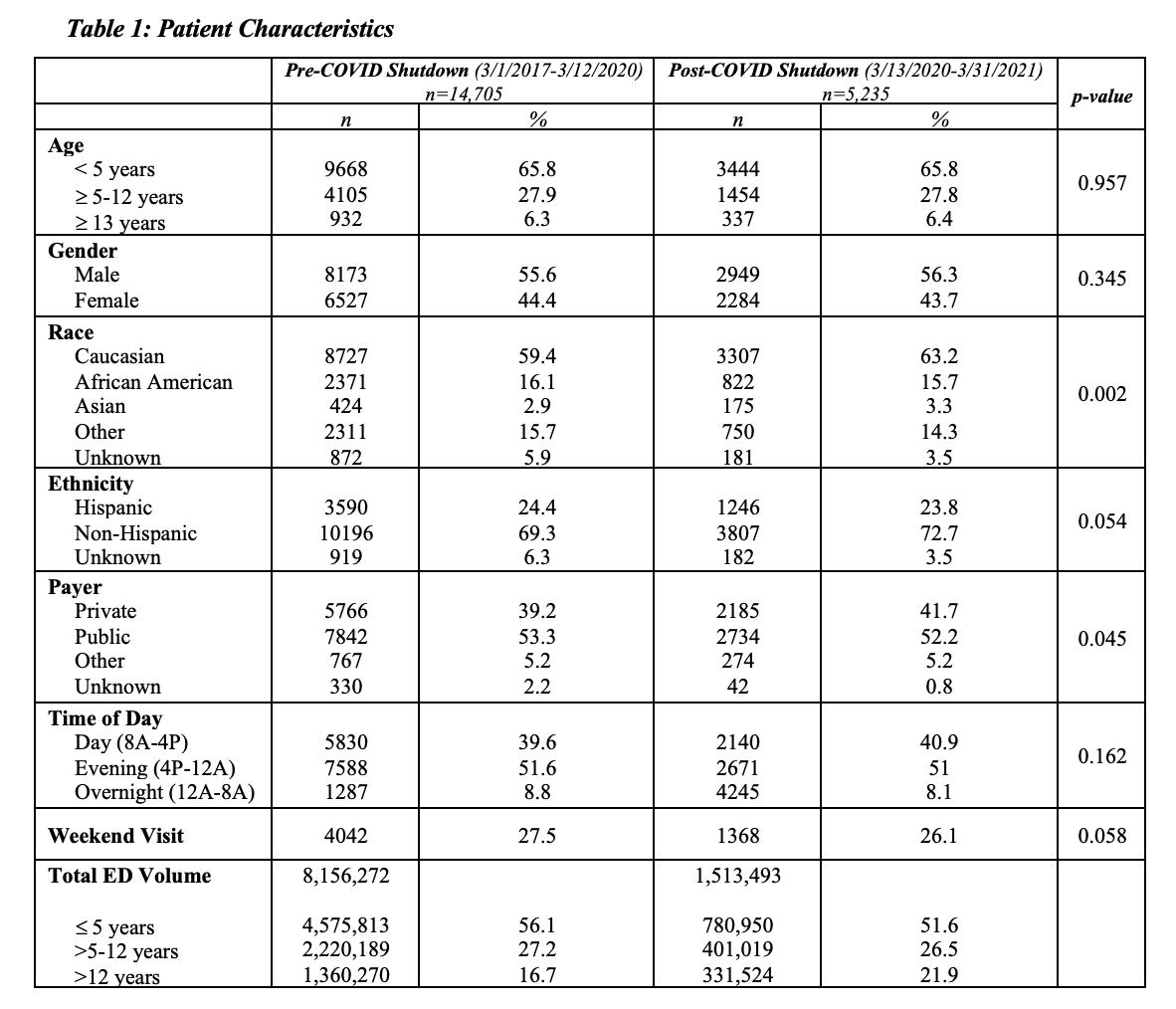Emergency Medicine: All Areas
Category: Abstract Submission
Emergency Medicine IV
88 - The Effect of COVID-19 Stay-At-Home Orders on the Rate of Pediatric Foreign Body Ingestions
Friday, April 22, 2022
6:15 PM - 8:45 PM US MT
Poster Number: 88
Publication Number: 88.106
Publication Number: 88.106
Jeffrey T. Neal, Boston Children's Hospital, Chestnut Hill, MA, United States; Michael C. Monuteaux, Boston Children's Hospital, Boston, MA, United States; John J. Porter, Boston Children's Hospital, Boston, MA, United States; joel Hudgins, Boston Children's Hospital, Boston, MA, United States

Jeffrey T. Neal, MD (he/him/his)
Instructor of Pediatrics
Harvard Medical School / Boston Children's Hospital
Chestnut Hill, Massachusetts, United States
Presenting Author(s)
Background: Foreign body ingestions are a common presentation to the emergency department, particularly in young children. Certain presentations, such as those associated with button batteries, can be life-threatening due to corrosive damage to the esophagus requiring emergent intervention. After the declaration of a national emergency during the COVID-19 pandemic, many "stay-at-home" orders were issued and schools were closed. At the peak of school closures, it is estimated that at least 55.1 million students in approximately 124,000 schools were affected.
Objective: We sought to determine if there was an effect on the rate of foreign body ingestions due to the COVID-19 pandemic. We hypothesized that the rate of foreign body ingestions increased due to children being at home for longer periods of time than expected with less supervision due to parental work responsibilities and other distractions during the pandemic.
Design/Methods: We performed a retrospective review of the Pediatric Health Information System (PHIS) of patients aged less than 19 years who were identified by ICD-10 codes for foreign body ingestion. We analyzed patients in three groups: young children ( < 5 years), school-age children (5 to 12 years) and adolescents (13 years), utilizing an interrupted time series analysis. Our primary outcome was the difference in the rate of foreign body ingestions. We compared one year after the declaration of the worldwide COVID-19 pandemic (March 13, 2020 to March 31, 2021) to the previous three years (March 1, 2017 to March 12, 2020).
Results: The overall volume of patients presenting to the emergency department decreased in the post-period. 4902 patients per year presented for foreign body ingestion pre-COVID shutdown versus 5,235 patients per year post-COVID shutdown. In all three age groups, there was a significant level change demonstrating an increase in rate of foreign body presentation post-COVID shutdown. In the youngest age group ( < 5 years), there was also a significant increase in slope post-COVID.Conclusion(s): The rate of foreign body ingestions as a proportion of emergency department volume increased following the declaration of the worldwide COVID-19 pandemic, primarily driven by an overall decrease in the total emergency department volume.
Table I - Patient Characteristics Patient characteristics in the Pre-COVID Shutdown group versus the Post-COVID Shutdown group
Patient characteristics in the Pre-COVID Shutdown group versus the Post-COVID Shutdown group
Figure I - Interrupted Time Series Regression.png) Interrupted time series regression for each age group for evaluation of the rate of foreign body ingestion before and after the declaration of the COVID-19 national emergency
Interrupted time series regression for each age group for evaluation of the rate of foreign body ingestion before and after the declaration of the COVID-19 national emergency
Objective: We sought to determine if there was an effect on the rate of foreign body ingestions due to the COVID-19 pandemic. We hypothesized that the rate of foreign body ingestions increased due to children being at home for longer periods of time than expected with less supervision due to parental work responsibilities and other distractions during the pandemic.
Design/Methods: We performed a retrospective review of the Pediatric Health Information System (PHIS) of patients aged less than 19 years who were identified by ICD-10 codes for foreign body ingestion. We analyzed patients in three groups: young children ( < 5 years), school-age children (5 to 12 years) and adolescents (13 years), utilizing an interrupted time series analysis. Our primary outcome was the difference in the rate of foreign body ingestions. We compared one year after the declaration of the worldwide COVID-19 pandemic (March 13, 2020 to March 31, 2021) to the previous three years (March 1, 2017 to March 12, 2020).
Results: The overall volume of patients presenting to the emergency department decreased in the post-period. 4902 patients per year presented for foreign body ingestion pre-COVID shutdown versus 5,235 patients per year post-COVID shutdown. In all three age groups, there was a significant level change demonstrating an increase in rate of foreign body presentation post-COVID shutdown. In the youngest age group ( < 5 years), there was also a significant increase in slope post-COVID.Conclusion(s): The rate of foreign body ingestions as a proportion of emergency department volume increased following the declaration of the worldwide COVID-19 pandemic, primarily driven by an overall decrease in the total emergency department volume.
Table I - Patient Characteristics
 Patient characteristics in the Pre-COVID Shutdown group versus the Post-COVID Shutdown group
Patient characteristics in the Pre-COVID Shutdown group versus the Post-COVID Shutdown groupFigure I - Interrupted Time Series Regression
.png) Interrupted time series regression for each age group for evaluation of the rate of foreign body ingestion before and after the declaration of the COVID-19 national emergency
Interrupted time series regression for each age group for evaluation of the rate of foreign body ingestion before and after the declaration of the COVID-19 national emergency